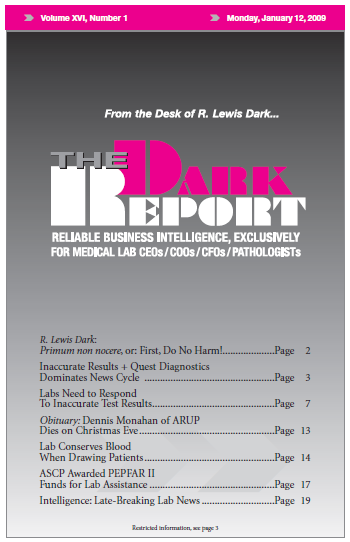CEO SUMMARY: New attention on both the risks associated with blood transfusions and the cost of blood products is triggering action by the nation’s hospitals. At the 719-bed Rhode Island Hospital, the laboratory is on the front line of the hospital’s blood management initiative. One change in long-standing practices is to encourage phlebotomists to draw …
Lab Conserves Blood When Drawing Patients Read More »
To access this post, you must purchase The Dark Report.


